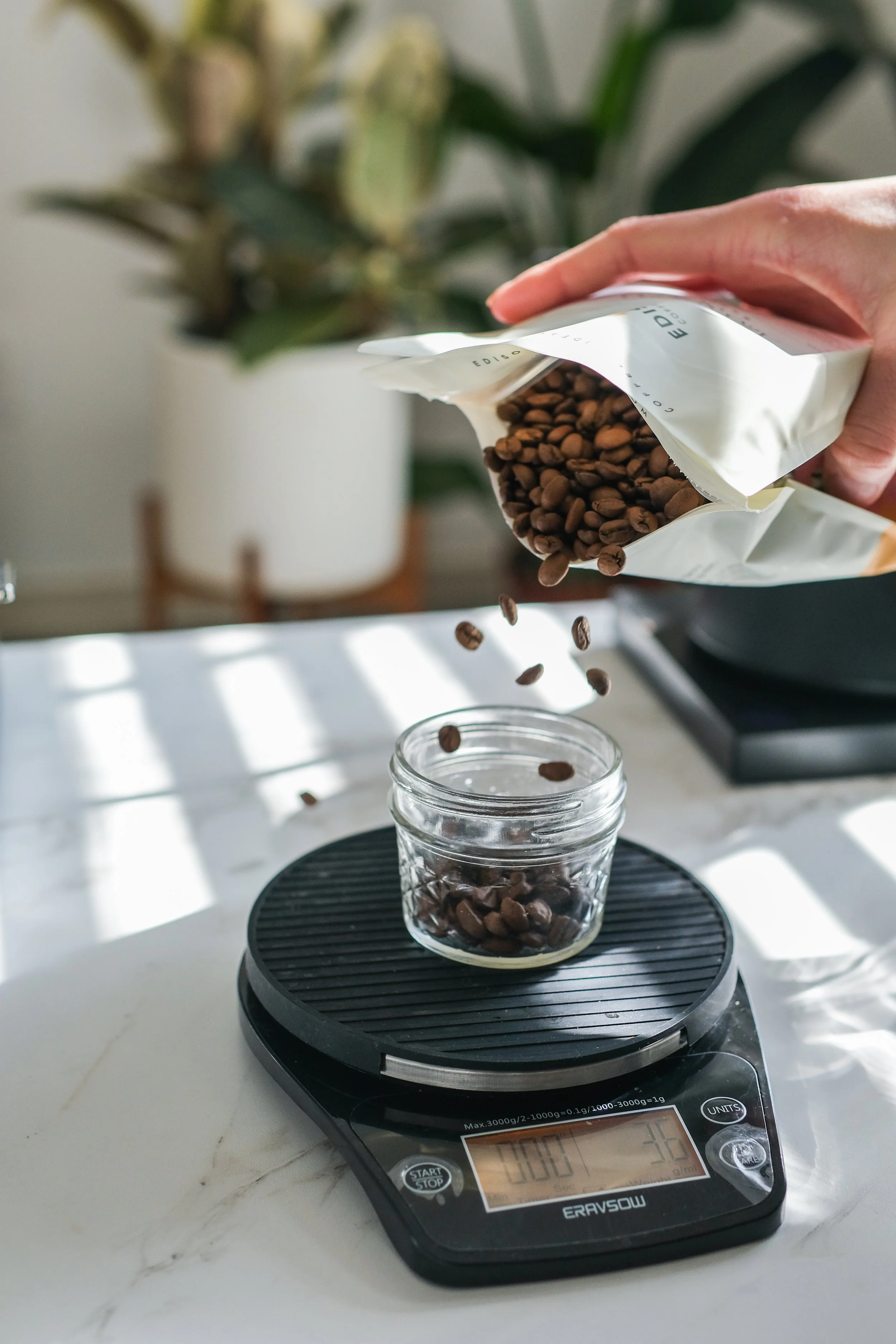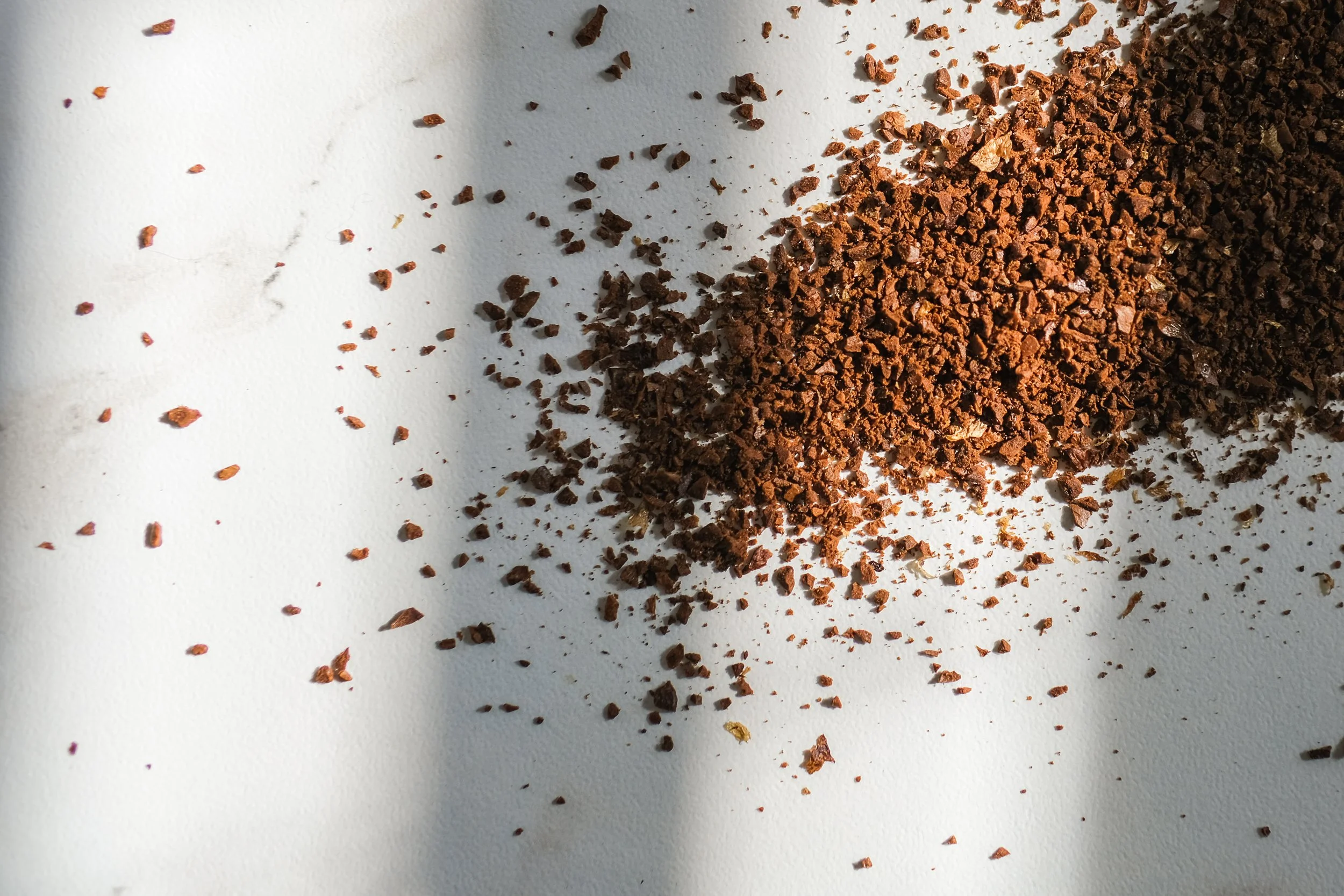Edison Coffee Brew Guide: The Chemex
Despite its elusiveness, one thing is for certain: The Chemex is one of the most elegantly designed pieces of coffee equipment ever produced. With its large hourglass shape, the Chemex is an ideal brewer for those who wish to make multiple cups of a pour-over at once. Furthermore, the Chemex uses bonded filters 20% thicker than most. This yields a heavily-filtered coffee free from most fats, acids and bitters contained within.
The result is a delicate, almost tea-like cup of coffee, where the extracted flavors are on clear display. Due to its extreme filtration, the Chemex may be one of the less forgiving brew methods, but don’t let this intimidate you. Brewing with a Chemex uses the same principles as brewing with a V60 does. We’ll take a closer look so that you can brew delicate coffees with confidence!
Materials Needed
Brewer: There are multiple Chemex models, differentiated by size. The 3-cup Chemex will be suitable for single-serving pour-overs, though you can scale up to the 10-cup Chemex if you want to brew for your household.
Filters: The Chemex requires a specific, heavily bonded filter for its extraction. These can come in different sizes depending on your brewer, so make sure you purchase the correct ones!
Grinder: In past articles, we’ve recommended the Baratza Encore as our grinder of choice. Hario’s ceramic hand grinder will also work well with the Chemex, but with some reservations. First, Hario’s Skerton model does not yield a coarse grind consistent enough for the Chemex and should be avoided. Second, though the Coffee Mill model is consistent, less coffee can be ground in it at once. Therefore, if you opt for a hand grinder, be ready to grind multiple times for larger quantities.
Kettle: We’ve talked about gooseneck kettles in past articles. Their usefulness is just as apparent with the Chemex as it is with the V60; and once again, we would recommend either the Bona Vita or Fellow’s Stagg kettles, depending on your budget.
Scale
A timer or stop-watch: Your iphone timer will do.
Water: We highly recommend using filtered water for your pour-overs. Avoid tap water which will carry impurities into your coffee, and distilled water which will leave too-bland of a coffee in its wake.
Coffee: Though you can brew any type of coffee on a Chemex, we would recommend using lighter roasts and avoiding medium-to-dark roasted coffees. The heavy filtration of the Chemex brings the beans’ flavors sharply to the forefront. This can make your darker coffees taste more roasty than they would in a more balanced form such as on drip or in a V60.
Instructions
Weigh out your coffee:
Using the same parameters that we had in our V60 post, we’re looking to use a ratio of 1:16, coffee to water. This means that we should use 22 grams of coffee and 350 grams of water.
Grind your coffee:
The Chemex requires a medium-coarse setting. Aim for something slightly coarser than what you would use in your coffee pot.
Heat your water to 200 degrees, and place a pre-wetted filter into Chemex:
Similar to V60, a pre-wetting of the filter will eliminate any papery taste. For filters as thick as the Chemex, this is essential.
Pour Coffee into filter and zero out on scale
Begin the Pour process:
Pour in a spiral motion, starting from the center and extending out clockwise. In order to keep the extraction rate consistent and long enough, you will pour in intervals of 30 seconds. The chart below shows the amount of coffee you should pour within each interval:
Time: :00 :30 1:00 1:30 2:00 2:30
Water poured: 50g 50g 50g 75g 75g 50g
Total coffee: 50g 100g 150g 225g 300g 350g
Your coffee should finish extracting around 3:30.
For Larger Batches
The Chemex is often used to make more than one serving. In some cases, up to 10 cups can be brewed. Though the coffee can still taste delicious, some elements of brewing are at risk: namely, consistency. Additionally, interval pouring becomes difficult to track when you’re trying to stretch it out beyond 350 grams. Intervals are designed to make flow rate consistent in a short period of time, which proves to be a challenge as your brew stretches closer to seven minutes instead of three.
The key for brewing larger batches is to aim for a proper extraction time, ensuring that your brew is neither over-extracted nor under-extracted. A good rule of thumb is to add an extra minute and half to your brew time for each additional serving you brew with your Chemex. Be sure to pour slow enough that your pours remain consistent, and that you’re not starting and stopping without rhyme or reason.
The Chemex is a complex coffee brewer, and may not be for everyone. However, if it’s for you, then you’ll love it. Its light and acidic quality can make for some genuinely great tasting cups. You may also enjoy the experimentation that comes with brewing large amounts for friends and family. If you’re up for trying something new, then pick up a Chemex and check out our offerings for a fun and exciting bean. Happy brewing!






